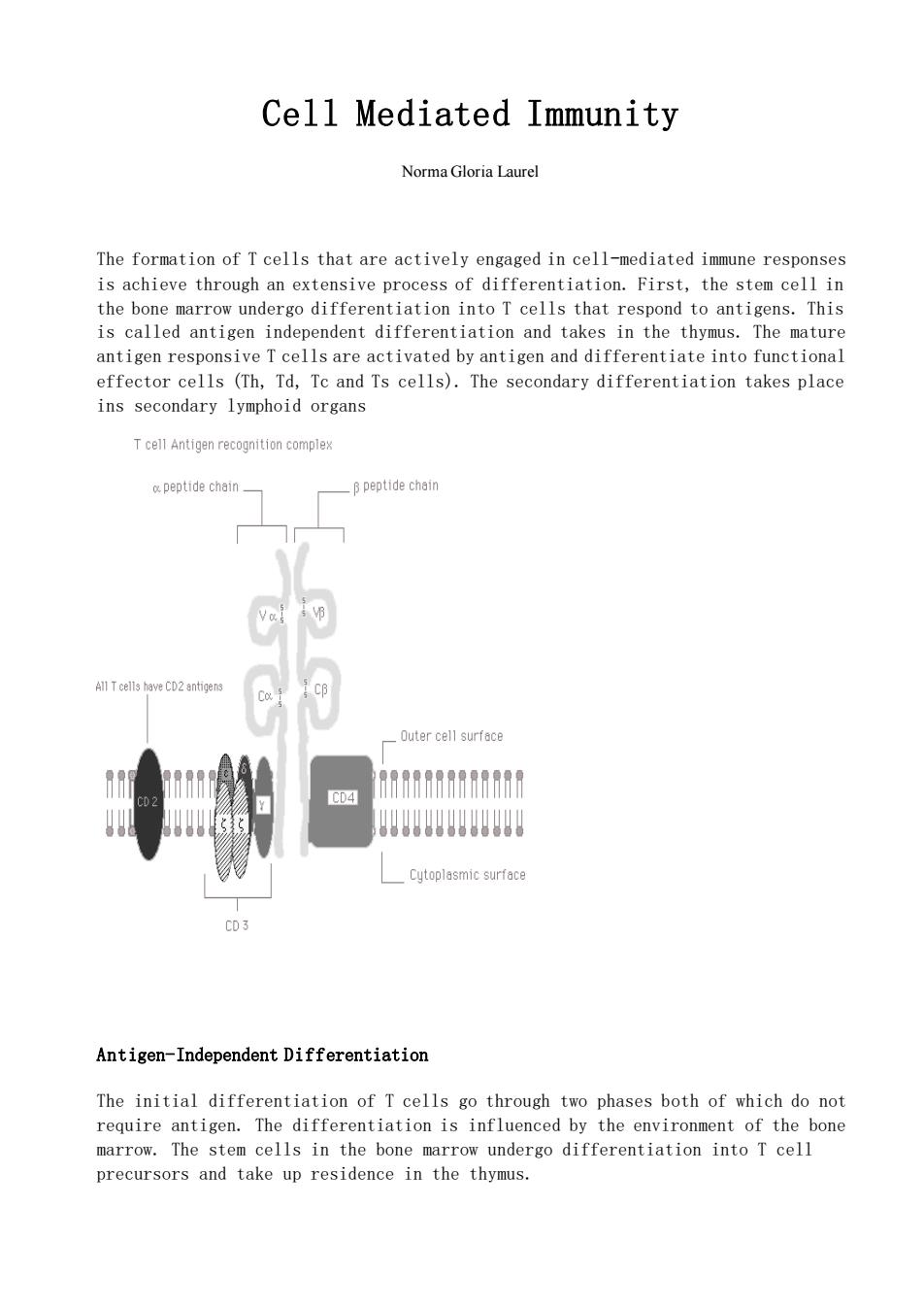
Cell Mediated Immunity Norma Gloria Laurel The formation of T cells that are actively engaged in cell-mediated immune responses is achieve through an extensive process of differentiation.First,the stem cell in the bone marrow undergo differentiation into T cells that respond to antigens.This is called antigen independent differentiation and takes in the thymus.The mature antigen responsive T cells are activated by antigen and differentiate into functional effector cells(Th,Td,Tc and Ts cells).The secondary differentiation takes place ins secondary lymphoid organs T cell Antioen recognition complex o peptide choin Outer cell surface 9999月998mA9 CD4 9四 Cytoplesmic surface Antigen-Independent Differentiation The initial differentiation of T cells go through two phases both of which do not require antigen.The differentiation is influenced by the environment of the bone marrow.The stem cells in the bone marrow undergo differentiation into T cell precursors and take up residence in the thymus
Cell Mediated Immunity Norma Gloria Laurel The formation of T cells that are actively engaged in cell-mediated immune responses is achieve through an extensive process of differentiation. First, the stem cell in the bone marrow undergo differentiation into T cells that respond to antigens. This is called antigen independent differentiation and takes in the thymus. The mature antigen responsive T cells are activated by antigen and differentiate into functional effector cells (Th, Td, Tc and Ts cells). The secondary differentiation takes place ins secondary lymphoid organs Antigen-Independent Differentiation The initial differentiation of T cells go through two phases both of which do not require antigen. The differentiation is influenced by the environment of the bone marrow. The stem cells in the bone marrow undergo differentiation into T cell precursors and take up residence in the thymus
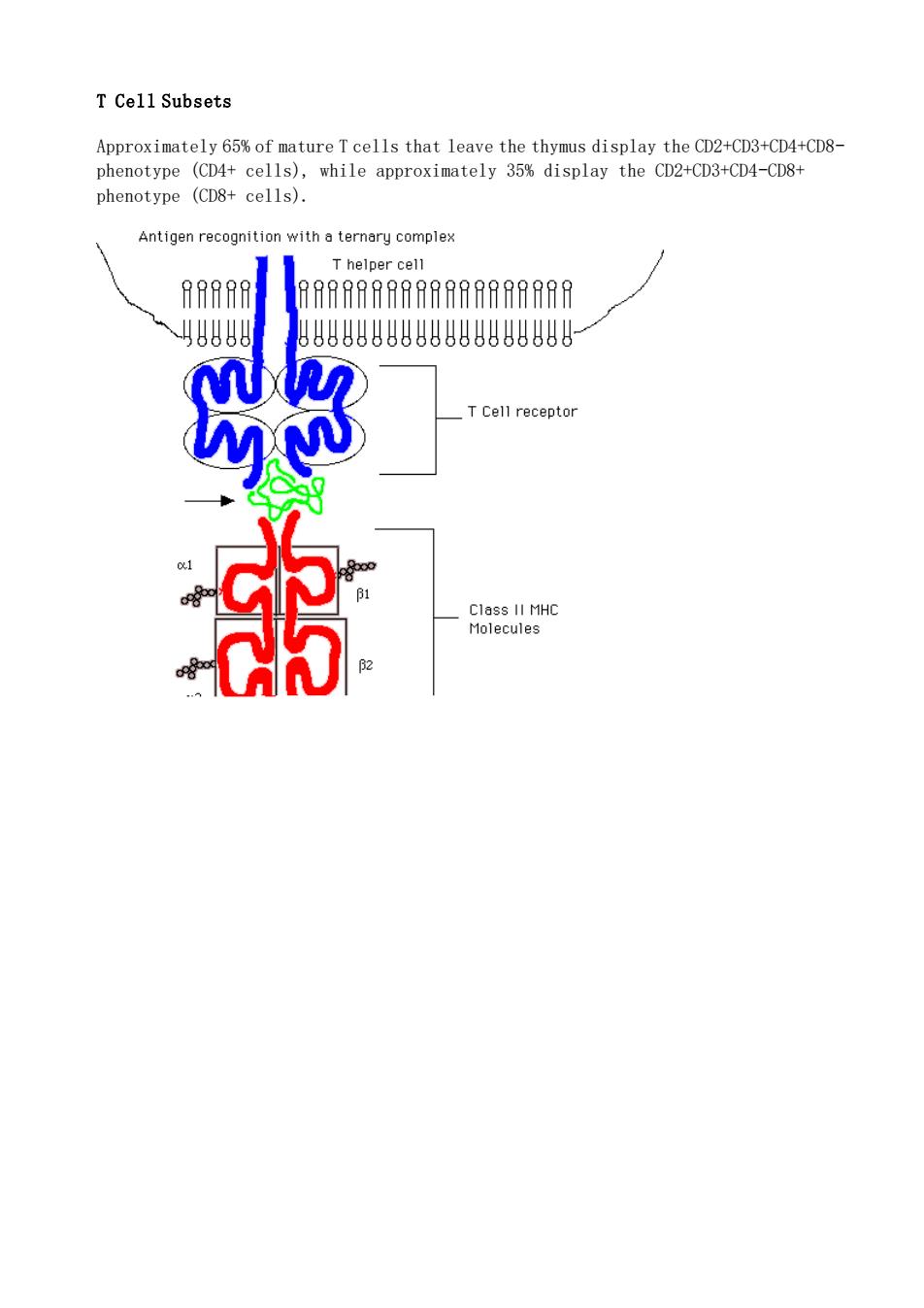
T Cell Subsets Approximately 65%of mature T cells that leave the thymus display the CD2+CD3+CD4+CD8- phenotype (CD4+cells),while approximately 35%display the CD2+CD3+CD4-CD8+ phenotype (CD8+cells) Antigen recognition with a ternary complex T helper cell 9RR8888RR989R8988R 888 8g58888g8888888888 TCell receptor Class II MHC Molecules
T Cell Subsets Approximately 65% of mature T cells that leave the thymus display the CD2+CD3+CD4+CD8- phenotype (CD4+ cells), while approximately 35% display the CD2+CD3+CD4-CD8+ phenotype (CD8+ cells)
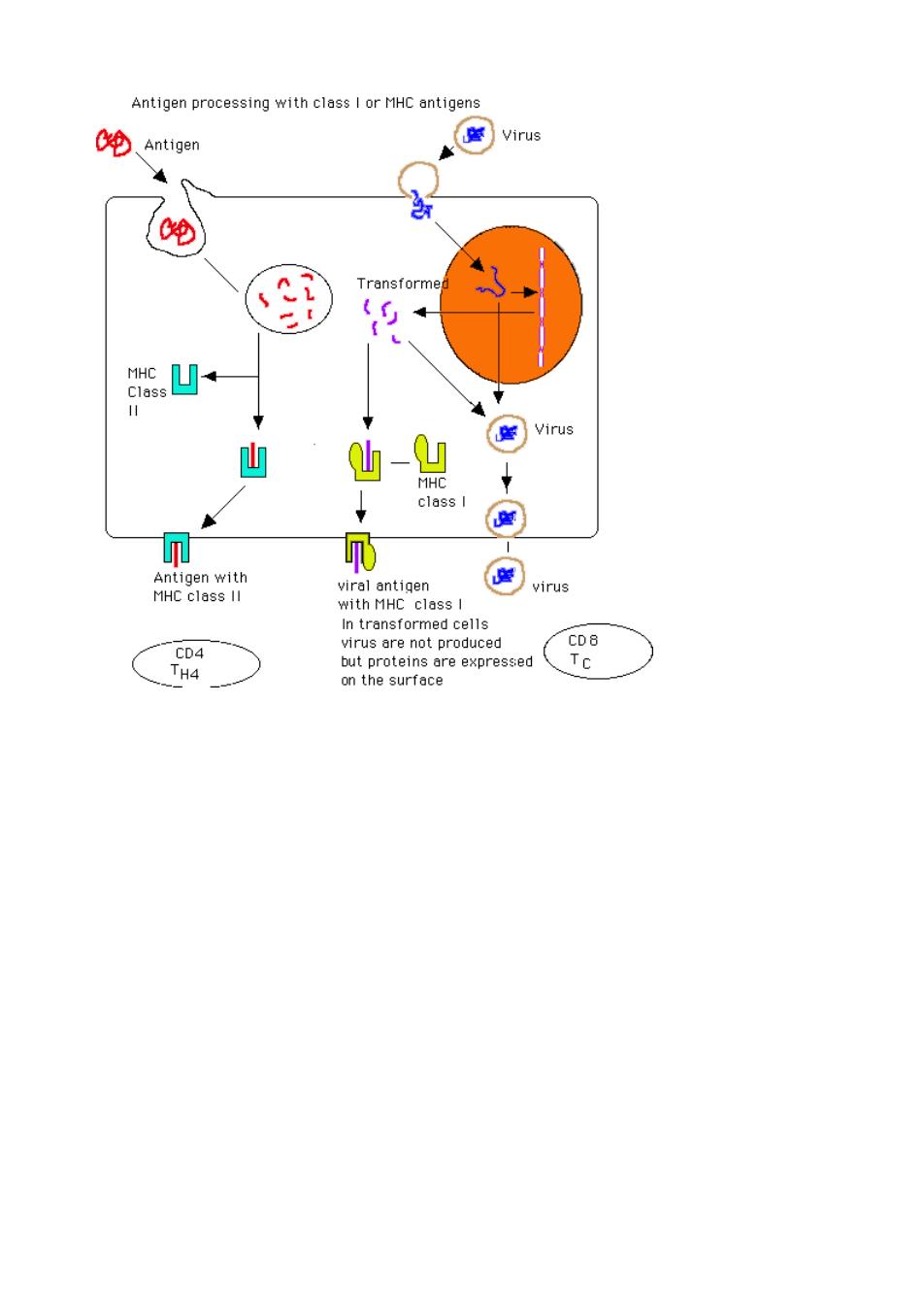
Antigen processing with class I or MHC antigens C纶Antigen virus % Transform 山- Virus 山 MHC class I Antigen with MHC class I In transformed cells virus are not produced
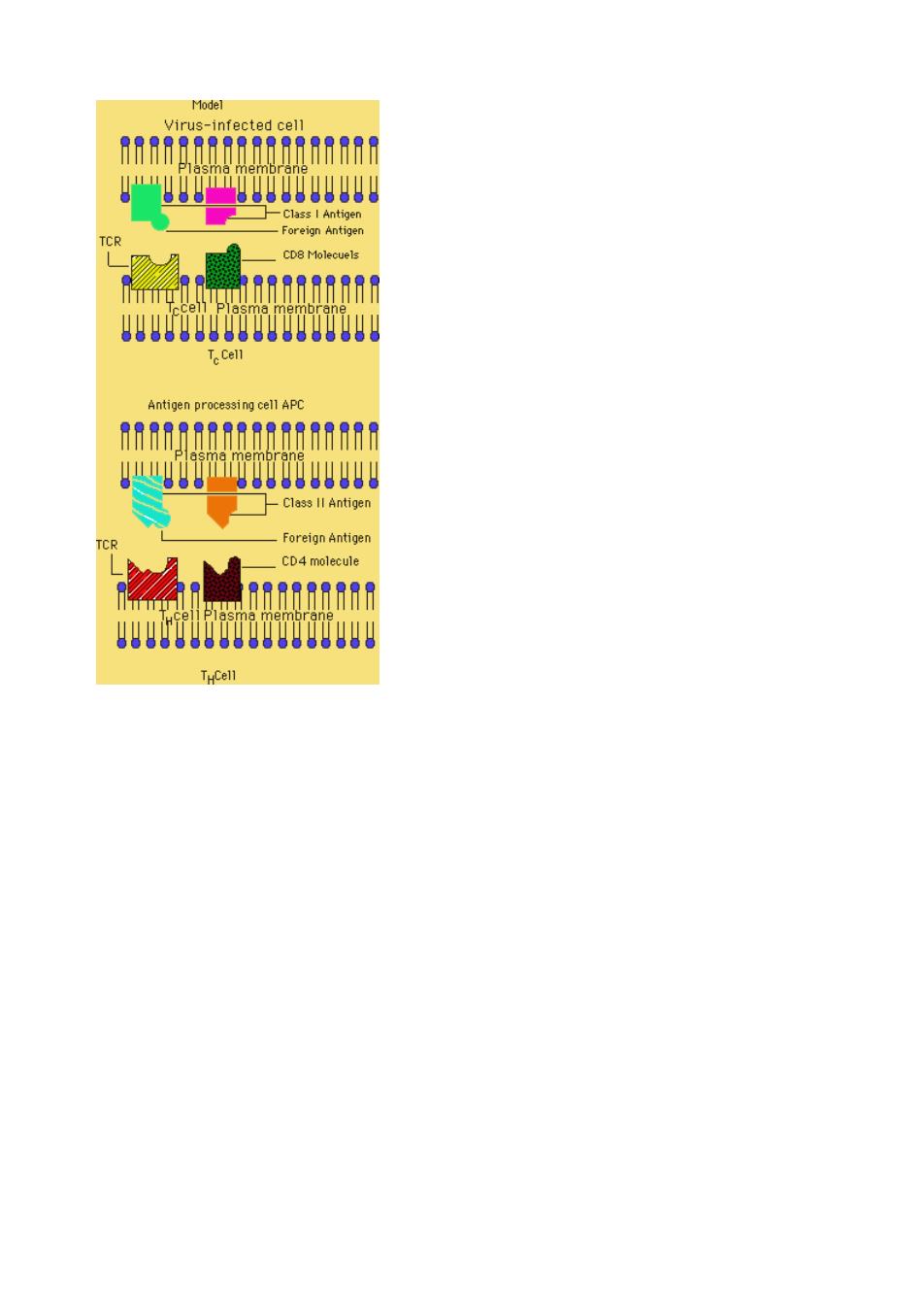
Virus-infected cell Foreign Antiger CD8 Molecuels T.Cell Class Il Antige retignAntige _CD4 molecule
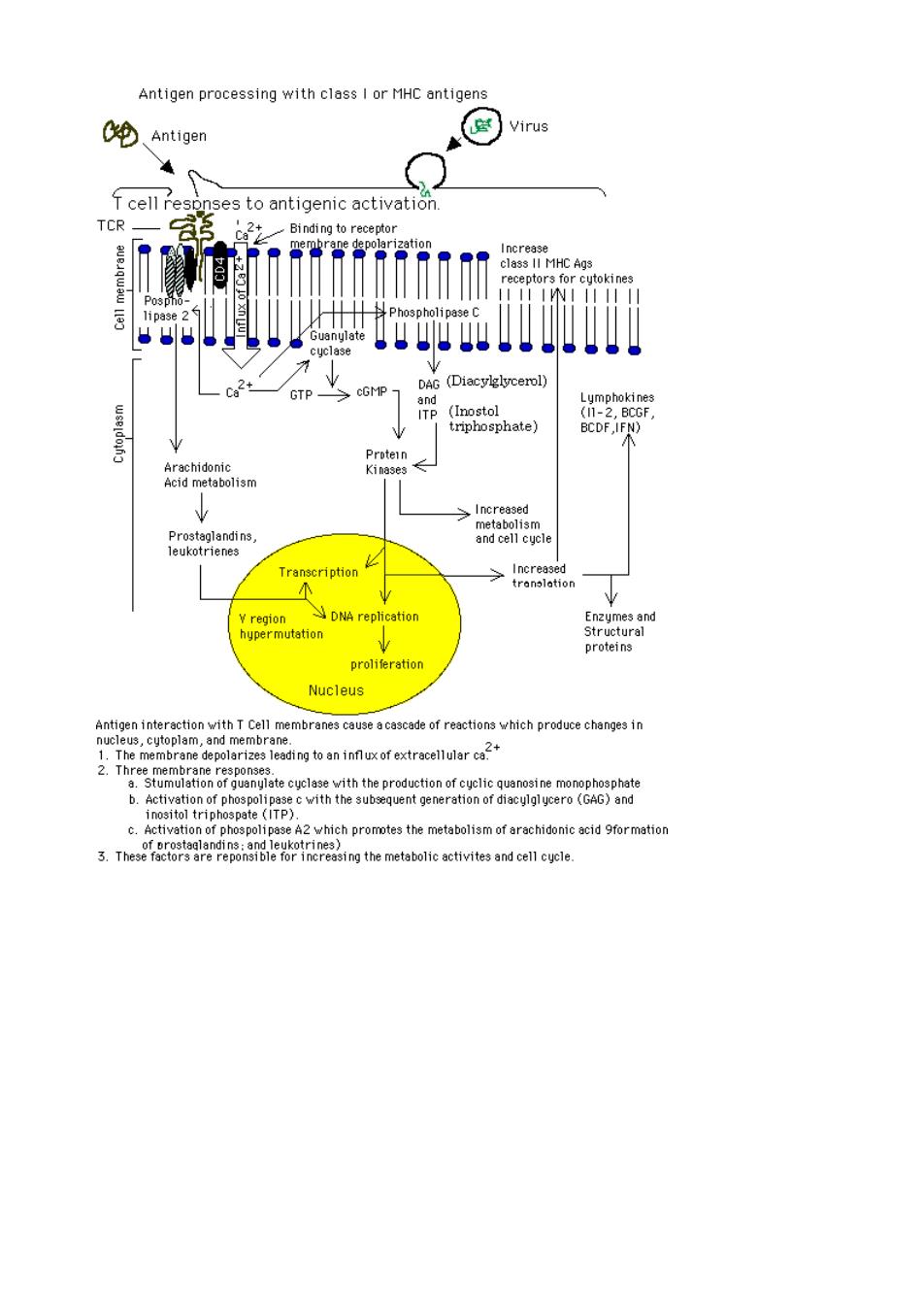
Antigen processing with class I or MHC antigens Ce、Antigen Virus T cell resc es to antigenic activation (DiacytetcerolW 时9l →r Ygeromutation Nucleus 2 Th vationg 1 A2ytMchpromotesthemetabolismofarscehidonicacid9iormstion 3.Thes8f8e8egngp0n8l86Pihcre3ingthemetebolicactivitesandceilcyele

structure of ILk molecule Lyy KU peptide chai -Bpeptide chain 45-55kD 40-50kD NHa of the They haveand&chains 帝 Membrane 4 UH T cell Antigen recognition complex o peptide chair B peptide chain Duter cell surface CD4 开质贵贵质开质开资新 Cytoplasmic surface
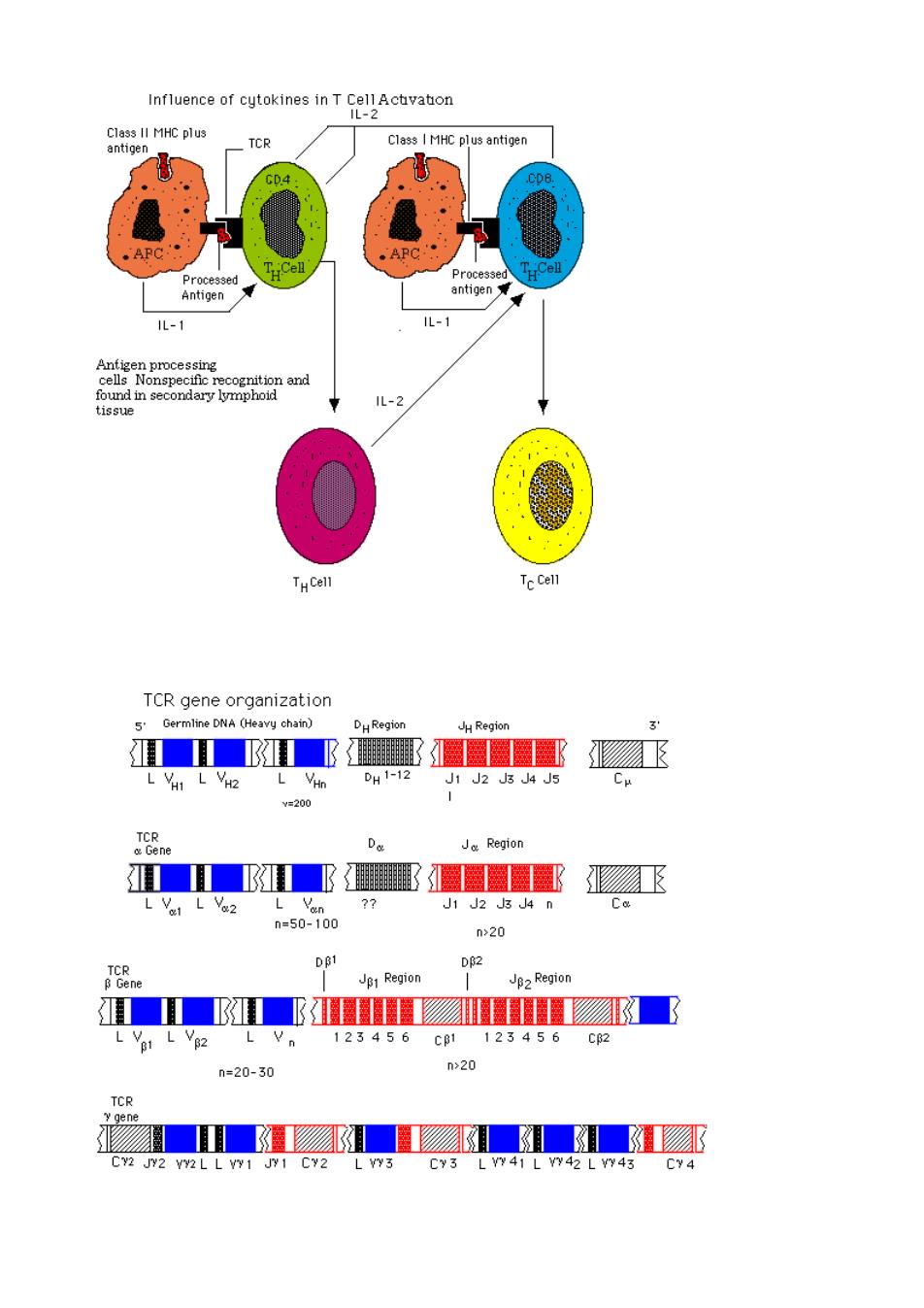
Influence of cytokines inT CeActvaton CssMHC plus _TCR Antigen L-1 IL-1 tissue 1L-2 THCell Te Cell TCR gene organization s.Germline DNA (Heayu chain) 值■了 下 DH1-12 J1 J2 Js J4 Js C TCR JRegion 阝% 1J234 n=50-100 n>20 p时 02 Je1 Region J2 Region TI下■ 123456 n 23456c1 n-20-30 n>20 TCR 2J22LLy1Y1C¥2L3 Cy3 L VY41 L YY42 L vy43 CY4
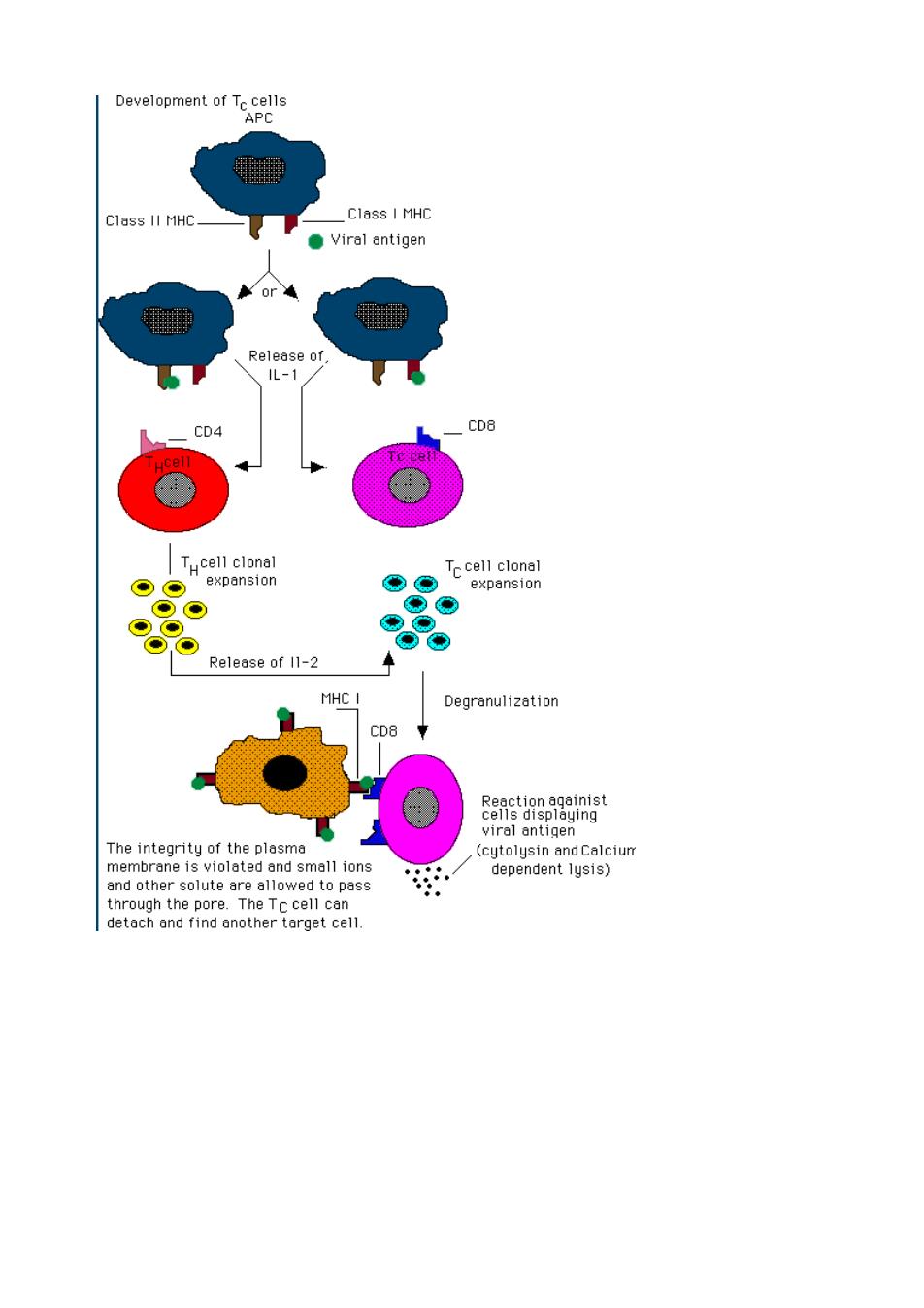
Devetopment ofe Class II MHC. Class I MHC ●Viral antigen Release of CD4 CD8 THcecenl Tecell clonal Release of 11-2 MHC I Degranulization CD8 898p2e1s virel antigen The intenritu of the nlasr membrane is violated and small ions detacn and find another target cell
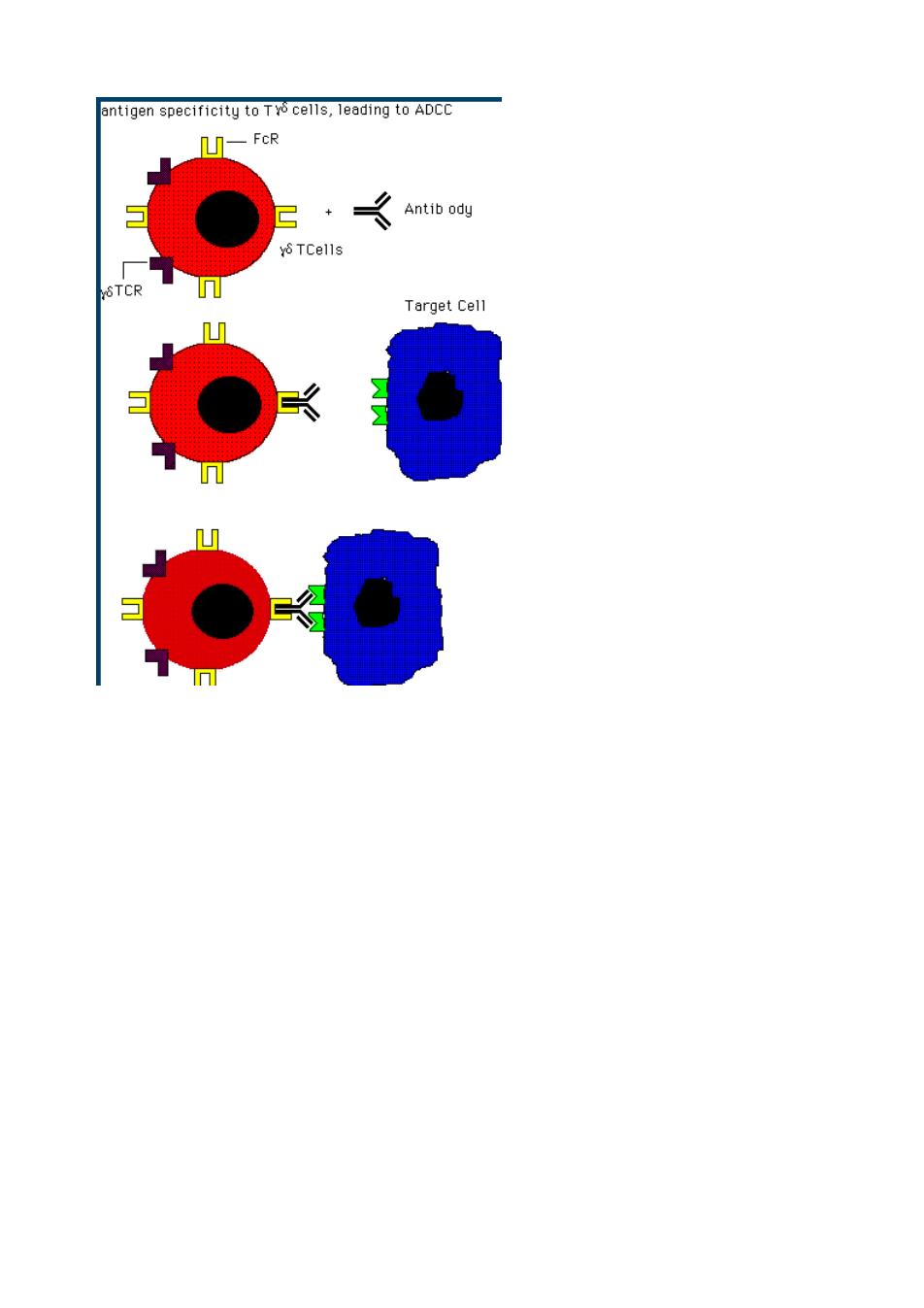
antigen specificity to Tcells,leading to ADCC 几UI-FcR TCells STCR Target Cel
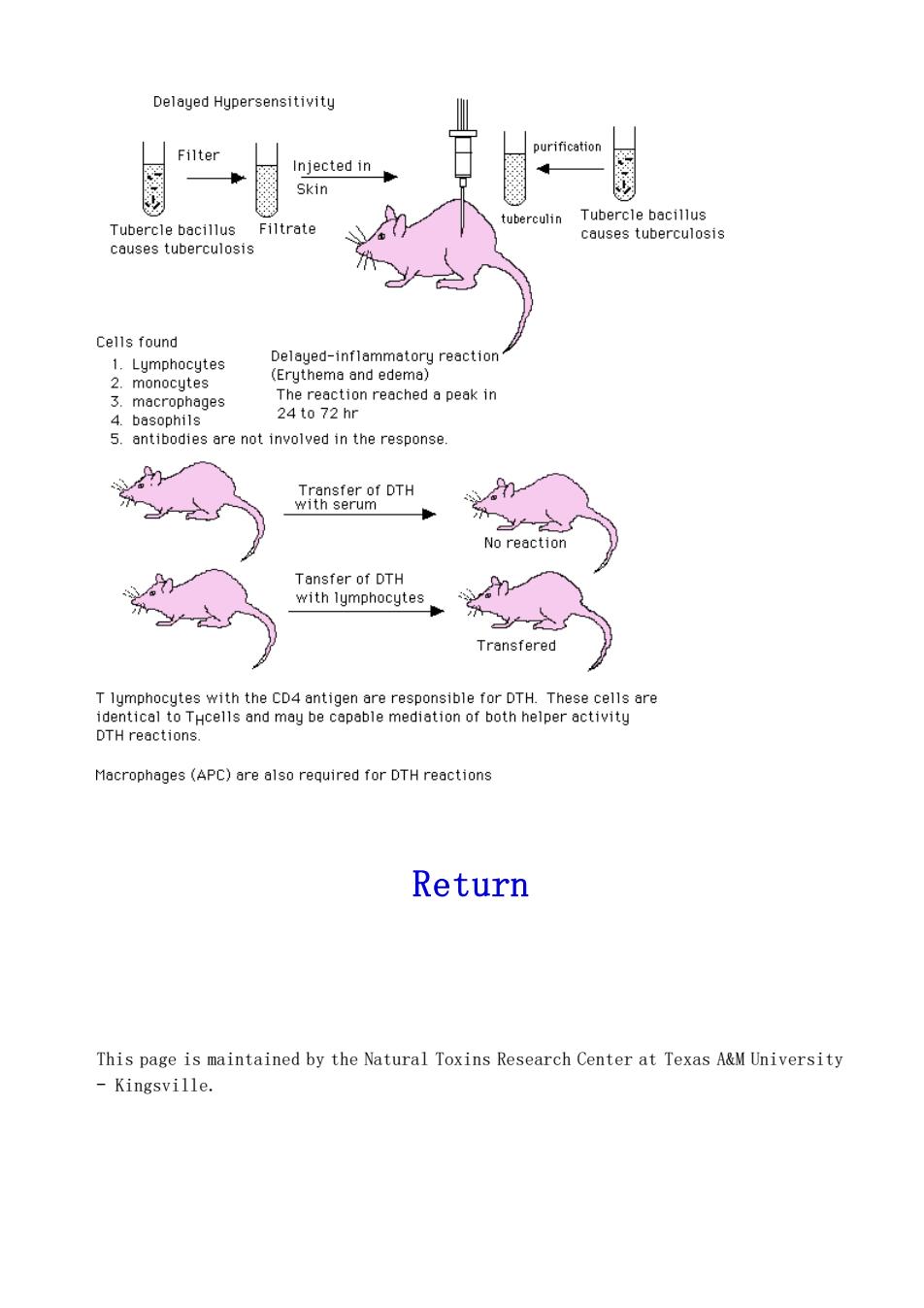
Delayed Hypersensitivity Injected in Skin uberculin Tubercle becillus Filtrate causes tuberculosis si Cells found Delayed-inflammatory reaction (Erythema and edema】 reached a peak in e not involved in the response h No reaction Tansfer of DTH with lymphocytes Transfered Macrophages(APC)are also required for DTH reactions Return This page is maintained by the Natural Toxins Research Center at Texas A&M University -Kingsville
Return This page is maintained by the Natural Toxins Research Center at Texas A&M University - Kingsville